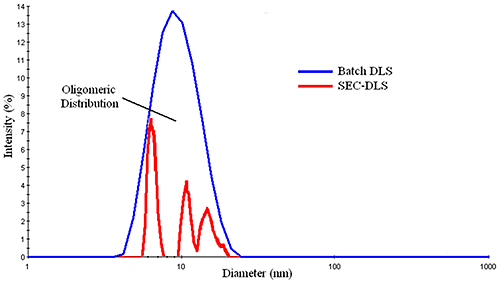

To enable the discovery of drugs, it is essential to have access to relevant forms of the target protein and valid biochemical methods for studying the protein and effects of compounds that may be evolved into drugs. This pilot screen confirms that the procedures developed herein enables SPR‐biosensor driven fragment‐based discovery of leads targeting tcFPPS, despite the lack of a reference compound. Instead, ranking could be performed from the slope of the linear relationship at low concentrations. Characterization of hits by SPR showed that all had low affinities and the relationships between steady‐state responses and concentrations were not sufficiently hyperbolic for determination of KD‐values. M > 1☌ and selectivity for tcFPPS in the presence of Mg2+. Hits were selected on the basis of response levels or ΔT A library of 90 fragments was efficiently screened by both assays at a single concentration in the presence and absence of the catalytic cofactor Mg2+. A thermal shift assay was used in parallel. An SPR‐biosensor assay for fragment library screening and hit confirmation was developed. It also confirmed that sensor surfaces prepared with structurally intact protein was active. A new coupled enzymatic assay, using luciferase for detection of pyrophosphate, was developed and used to confirm that the purified enzyme was active after purification and storage. The improved methods enabled the production of pure, folded and dimeric protein, and identified procedures for storage and handling. Initial problems with protein stability and lack of useful reference compounds motivated optimization of experimental procedures and conditions. The method requires functional sensor surfaces with high sensitivity for extended times and appropriate controls. hard sphere, globular, dendrimer, chain stiffness, and degree of branching).Procedures for producing and exploring Trypanosoma cruzi farnesyl pyrophosphate synthase (tcFPPS) for surface plasmon resonance (SPR) biosensor‐driven fragment‐based discovery have been established. Hydrodynamic sizes are more easily measured than radii of gyration and can be measured over a wider range of sizes. The conversion from hydrodynamic radius to radius of gyration is a function of chain architecture (including questions of random coil vs. The hydrodynamic radius is not the same as the radius of gyration. Radius calculations are the same except for a factor of two.Īlso, a note to those interested in polymer size. That is, the determined particle size is the size of a sphere that diffuses the way as your particle.įor those who work with protein sizing and other areas where hydrodynamic radius is more commonly used, note that the development here is around diameter. Dynamic light scattering was performed with a. Finally, and most importantly, it reminds the analyst that the particle size determined by dynamic light scattering is the hydrodynamic size. The inflexion point of the unfolding curve is at 2.6 M GnHCl by both methods. Temperature is even more important due to the viscosity term since viscosity is a stiff function of temperature. The first is that sample temperature is important, at it appears directly in the equation. However, the equation does serve as important reminder about a few points. The calculations are handled by instrument software. T is thermodynamic temperature (we control this).k B is Boltzmann’s constant (we know this).D t is the translational diffusion coefficient (we find this by dynamic light scattering).D h is the hydrodynamic diameter (this is the goal: particle size!).


 0 kommentar(er)
0 kommentar(er)
